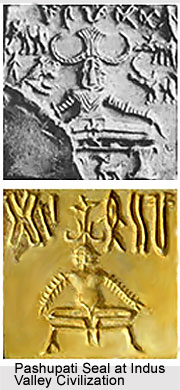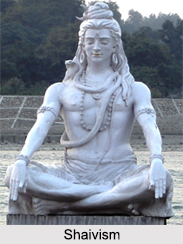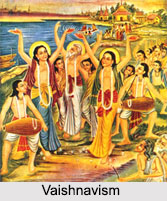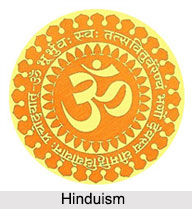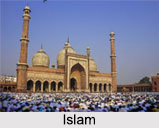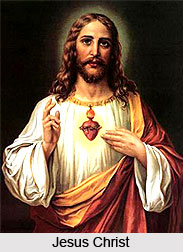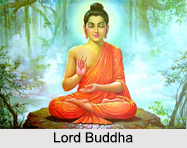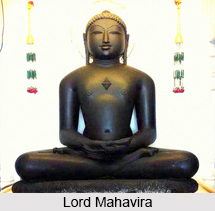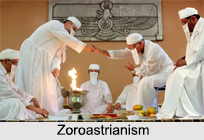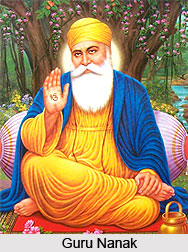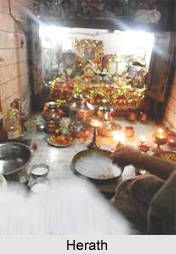 Herath in Kashmir region is a Shivaratri festival celebrated on trayodashi or the thirteenth of the dark half of the month of Phalguna (February-March) and not on chaturdashi or the fourteenth as in the rest of the country.
Herath in Kashmir region is a Shivaratri festival celebrated on trayodashi or the thirteenth of the dark half of the month of Phalguna (February-March) and not on chaturdashi or the fourteenth as in the rest of the country.
Shivaratri is regarded as the most important festival of the community. The reason for it is that, this long drawn festival that is celebrated for one full fortnight as an elaborate ritual is associated with the appearance of Bhairava (Shiva) as a jwala-linga or a linga of flame.
History of Herath
Shivaratri is called "Herath" in Kashmiri, a word derived from the Sanskrit "Hararatri" the "Night of Hara" (another name of Lord Shiva). It has been described as Bhairavotsava in Tantric texts as on this occasion Bhairava and Bhairavi, His Shakti or cosmic energy, are propitiated through Tantric worship. According to the legend associated with the origin of the worship, the linga appeared at pradoshakala or the dusk of early night as a blazing column of fire and dazzled Vatuka Bhairava and Rama (or Ramana) Bhairava, Mahadevi"s mind-born sons, who approached it to discover its beginning or end but miserably failed. Exasperated and terrified they began to sing its praises and went to Mahadevi, who herself merged with the awe-inspiring jwala-linga. The Goddess blessed both Vatuka and Ramana that they would be worshipped by human beings and would receive their share of sacrificial offerings on that day and those who would worship them would have all their wishes fulfilled. As Vatuka Bhairava emerged from a pitcher full of water after Mahadevi cast a glance into it, fully armed with all his weapons (and so did Rama), he is represented by a pitcher full of water in which walnuts are kept for soaking and worshipped along with Shiva, Parvati, Kumara, Ganesha, their ganas or attendant deities, yoginis and kshetrapalas (guardians of the quarters) - all represented by clay images. The soaked walnuts are later distributed as naivedya. The ceremony is called "vatuk barun" in Kashmiri, which means filling the pitcher of water representing the Vatuka Bhairava with walnuts and worshipping it.
Puja in Herath
The Puja or the offerings comprises elaborate Tantric rituals that involve observance of a fast during the day and performance of a yagya or fire sacrifice at night. Choice dishes, mainly of meat and fish but also vegetarian as an option, are cooked as sacrificial food and partaken of by the worshipper and his family after being symbolically offered to the whole host of deities and attendant deities associated with Shivaratri.
Symbolism of Herath
The symbolism of Herath is the anionic earthen images, vague and others representing Lord Shiva or Mahadeva, Ganesha, Parvati, yoginis and kshetrapalas.
